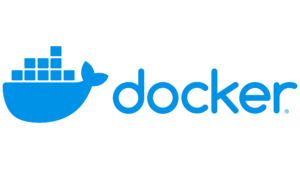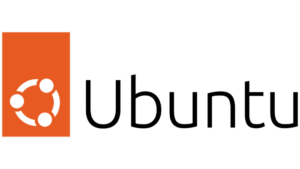Episode 466 Show Notes
Welcome to mintCast
the Podcast by the Linux Mint Community for All Users of Linux
This is Episode 466!
Recorded on Sunday, August 17, 2025.
Back from Florida im Joe; … Moss; Enjoying a much needed four day weekend, I’m Bill; … Majid; … Eric, … Charles mild temperatures in the Pac NW … Might have a solution for my OTA DVR woes, I’m Jim

— Play Standard Intro —
- First up in the news: Linux Mint 22.2 “Zara” – BETA Release

- In our Innards section: Joe goes hard on some 3D printing
- And finally, the feedback and a couple of suggestions
- Please remember if you want to follow along with our discussions, the full show notes for this episode are linked in the show’s description at mintcast.org/show-notes

— Play News Transition Bumper —
The News
20 minutes
- Linux Mint 22.2 “Zara” – BETA Release
- From the Linux Mint blog (via londoner)
- This BETA release might contain critical bugs, please only use it for testing purposes and to help the Linux Mint team fix issues prior to the stable release.
Upgrade instructions will be published after the stable release of Linux Mint 22.2.
It will be possible to upgrade from this BETA to the stable release.
It will also be possible to upgrade from Linux Mint 22.1. - Sticky Notes feature rounded corners:
An Android companion app called StyncyNotes was written by Graham Bygrave. It’s available at https://f-droid.org/en/packages/org.grating.styncynotes. - The login screen looks better than ever thanks to the addition of a blur effect in the panel and the dialog box. Support for user avatars was also added.
- In addition to fullscreen, Hypnotix now supports two additional modes.
In “Theater Mode” all the controls and menus are hidden so your TV programme fills the entire window:
In “Borderless Mode” hypnotix even hides the window borders and the titlebar. You can still move your window around with the mouse by pressing the ‘Alt’ key. This is ideal to watch TV when your window is tiled to the side or the corner of the screen. Hypnotix received performance improvements. It is faster at startup and during search operations when dealing with large playlists.
Hypnotix now inhibits the session when playback is active.
The sound volume is no longer reset when you switch channels. - Linux Mint 22.2 features a brand new XApp called Fingwit.
This application is dedicated to fingerprint authentication. Fingwit detects if your computer has a fingerprint reader and lets you record your fingerprints. It then configures your system to use fingerprint authentication for:
- The screensaver
- sudo commands
- Admin apps (pkexec)
Note: If like most users you use home directory encryption or a keyring, the login screen still requires you to type a password. If you don’t, you can configure Fingwit to also use fingerprint authentication in the login screen.
- LibAdwaita was patched to work with themes. Support for libAdwaita was added to Mint-Y, Mint-X and Mint-L. The following apps were upgraded to their libAdwaita versions:
- gnome-calendar
- simple-scan
- baobab
- Accent colors
XDG Desktop Portal XApp now supports accent colors. It scans the GTK theme for a named color called “accent_color”. If this color is present it provides it via the XDG Settings API.
Put simply this changes the accent color in Flatpak libAdwaita applications based on your chosen GTK theme.
Note to theme artists: This is a one-liner in your GTK CSS.@define-color accent_color #9ab87c;To prepare for the future and potentially write applications “in libAdwaita”. The library was forked into a new XApp library called libAdapta. https://github.com/xapp-project/libadapta
LibAdapta is libAdwaita with theme support and a few extras. It provides the same features and the same look as libAdwaita by default. In desktop environments which provide theme selection, libAdapta apps follow the theme and use the proper window controls. LibAdapta also provides a compatibility header which makes it easy for developers to switch between libAdwaita and libAdapta without requiring code changes. - In Xviewer, the EDID-based color correction is now configurable and disabled by default. This feature was counter-intuitive and conflicted with the color management handled at hardware and desktop level. A new thumbnailer was written for cover art in .aiff audio files: xapp-aiff-thumbnailer. An iOS version of Warpinator is available at https://apps.apple.com/mu/app/warpinator/id1609289992.
In the WebApp Manager, the webapp description field is now editable. When renaming multiple files and using enumerations, it is now possible to use leading zeros, define the starting number of the enumeration and its increment step. - Artwork improvements
We added a little bit of blue in our theme. This is common practice in UI design. It’s done on mobile, desktop and all over the web. Grey is rarely completely grey, it usually has a little bit more blue in it than red and green.
Take your color picker and check the grey on GitHub. It’s not #f8f8f8, it’s #f6f8fa. Firefox does that well, Google docs, Trello etc..
The reason this is done is to make grey slightly more metallic looking and appear more modern. Pure grey is neutral, it can be perceived as cold or warm based on its surroundings. By bumping the blue (or in the case of github both the green and the blue) we force it to look cold.
Interestingly libAdwaita also just did this.
If you update your Flatpak libAdwaita applications you’ll see they now use #222226 for dark and #ebebed for light. Because there are many libAdwaita apps already in Flathub and since our own theme is already quite close to it in terms of colors, we’re adapting Mint-Y to use the same colors. - The difference in the light theme is subtle. The headers go from #e8e8e8 to #ebebed. The difference is more visible in the dark theme, which also affects dark apps and the panel and cinnamon clutter elements in the default theme. This one is going from #2b2b2b to #222226 and #404040 to #2e2e33. It looks more modern but also much softer than before.
These changes bring the following improvements:
- The themes look more modern
- The dark theme and Cinnamon elements are softer and much nicer looking
- Flatpak libAdwaita applications fit in a little bit better since they use the same colors
- The Software Manager welcome screen looks better than before.
Help was added to explain the difference between Flatpak and system packages. When an update requires a reboot the Update Manager now shows a reboot button. The accuracy of the search results was improved in the MATE application menu.
The Linux Vendor Firmware Service (LVFS) project is seeking increased sponsorship (Eric)
- From Richard Hughes, creator and maintainer of the Linux Vendor Firmware Service (LVFS) posted at blogs.gnome.org
- The Linux Vendor Firmware Service (LVFS) project is seeking increased sponsorship from its primary beneficiaries to ensure long-term sustainability and growth. While currently supported by the Linux Foundation and Red Hat, the project’s expanding demands necessitate additional funding to hire more staff, build redundancy, and fortify its infrastructure, transitioning to a model where major users contribute proportionally to the service’s critical role in the open-source ecosystem.
- Sustainability Challenge: Current funding from the Linux Foundation (hosting) and Red Hat (staff time) is becoming insufficient for LVFS’s rapid growth and future needs.
- Call for Sponsorship: Major vendors heavily utilizing LVFS are urged to provide financial support or dedicate developer resources.
- Funding Purpose: To hire additional staff, ensuring project continuity, allowing for current staff to take leave, and enhancing overall resilience.
- Fair-Use Quota System: A new tiered quota system will be introduced, with larger users expected to contribute more to the project.
- Minimal Impact on Small Vendors: A generous free “associate” quota (50k downloads, 50 uploads monthly) ensures most smaller vendors are unaffected.
- Incentives/Restrictions: Non-sponsoring vendors will gradually face limitations, including removal of logos from the main page, loss of detailed analytics, restricted API access, and limited automated uploads.
- Phased Implementation: A draft timeline (April 2025 to April 2026) outlines the gradual rollout of these changes and restrictions.

— Play Innards Transition Bumper —
Linux Innards
30 minutes (~5-8 minutes each)
- Starting off with 3d printers
- First thing to think about is what 3d printer should I get
- This is a tough question and it kind of depends on you financial situation. Most printers these days are are very lego like and will just snap together or just need 15 minutes of setup to be up and running.
- if money is no object and you don’t have concerns with bambu’s policies then go with bambu lab h2d. Multi material printing and lots of types of materials that you can print. But the reason that I say that it is a good place for beginners is that it is easy to setup and easy to print with from what I have read. The hard parts comes with the slicing and deciding what to print where.
- But that is 1200 dollars as a starting point. On the other hand they have recently dropped the price on the p1p to 399, I think to make it more competitive with the centauri carbon. But you would have to pay extra for multi material and more importantly an enclosure that allows for more materials
- But this is for starting out. I no longer use mine but I would almost always suggest the Ender 3 line to a new printer. They are low cost as well as easy to setup and to upgrade over time. Usually you can get them for 150 to 250 dollars new depending on the sale and whether or not you are buying online. But if you keep an eye on fb market place you can usually pick up a deal, maybe even on one that has been upgraded already although that has a lot of risks of its own.
- Also like I was saying it is easy to upgrade but also easy to repair and will teach you a lot about how 3d printers work as you work to fix things that go wrong on it. And they will. Nozzles, hotends, extruders, ptfe tubing, motors, mainboards, power supplies, fans, axis rods, belts, beds. They all go bad eventually and for some of them it is good to keep extras on hands.
- Starting out it is good to keep extra nozzles, belts, and build plates as well as cleaning kits close by and some hairspray or glue stick oh and a deburring tool for cleaning up prints
- For those that are screaming at me this is for beginners
- 3d print some tool holders that can mount to the device for fun and utility
- Starting out it is good to keep extra nozzles, belts, and build plates as well as cleaning kits close by and some hairspray or glue stick oh and a deburring tool for cleaning up prints
- With any printer I think that the easiest material to get started with is going to be PLA. Lower temperature and usually fairly tolerant of mistakes. Petg being the next easiest and will print on the unenclosed ender. We can get into the differences if anyone wants
- For your first print, the printer usually comes with some kind of gcode, either on the device already or on a handy USB stick. Also usually comes with a small amount of filament. I would not use the tester filament. I would have a new spool ready and waiting and I would print the first one
- First steps BEFORE your first print.
- Follow all the installation instructions. Super easy on the ender 3 but yes follow all the steps
- Level your bed.
- Many newer printers have auto bed leveling but especially on the ender line I think it is good to do the first level manually if it has the tensioners in the corners.
- Check and make sure the tension on all the belts is good
- slowly move the print head up and down to make sure there are no jags or burrs
- Home the device from the controls and make sure everything is moving
- Follow the instructions of you device to load your material making sure that your spool is also free moving and the filament is not crossed over itself
- I would say that it is a good idea to print whatever gcode they provide for the first print.
- The ender is a slower printer than a lot of the others on the market right now but it is not terrible and it can be a good long term printer if you are willing to put in the wrench time yourself and watch a lot of youtube videos on what could be wrong with your prints and how to fix them
- It will teach you trouble shooting skills
- That not even talking about the elegoo centauri carbon yet which I think is also great for beginners
- Next thing to learn is slicers
- The easiest way to get things to print is to check the internet and see if people have already created the thing that you are looking to make.
- Yeggi.com is one that I have been using as it searches all of the large 3d printing sites and is likely to find what you are looking for. But I do have to give a shout out to thingiverse as it is the one that I usually go to first to check for things
- The stls(or 3mf) that you download are generic 3d images and not made for your printer so you need to “slice” them and make gcode that your printer can use and the program that does that is called a slicer.
- For the longest time I used CURA and for good reason. The controls are simple and understandable and easy to find, it even has a search function if you know the name of the setting that you are looking for but don’t know the section that it is in.
- CURA makes it simple to set the nozzle temp which should be on the spool that you got as well as the bed temperature which is important for adhesion. You also need to worry about supports and cooling which you will have to do some studying for to understand what the settings need to be. It might be good for the first few prints to see how the stuck settings work. When you tell the slicer what printer you have and what materials you are using the setting will be populated except for supports. You can make changes to the settings based on how the print comes out. But I could make a whole nother show just on the different settings and what you can do with them
- Recently I have switched to orca slicer because it works on linux unlike the elegoo slicer which is just a tweaked version of orca anyway. It is a little more difficult to use and some of the things are much more buried, like manually adjusting the temps for materials that don’t quite match the settings in practice. But it is great for connecting directly to my printer.
- Next thing to talk about is getting started with making your own models. I would suggest tinkercad for someone with zero experience and or skill at 3d modeling like myself. It has a lot of functions that can complicate things but I tend to stick to the simple things that I can run by the numbers. Get a caliper. Those things are awesome.
- Best things to do when starting out is to take other peoples designs and modify them for your needs. If you publish remember to attribute and mark your object as a remix.
- Materials
- For now I think that I am only going to talk about PLA PETG and ABS
- PLA like I was saying earlier is one of the easiest materials to print with and pretty low cost. Prints at a low temperature and is excellent for prototyping and making dust collectors. I would not use it in a car or for outdoor applications in texas as it is low temp and will deform quickly. I wont talk a lot about strength as that depends on a lot of factors, like walls and infill, but it is generally considered weaker than most other materials
- PETG also is low cost and while not as easy to print with as PLA it is still not hard. Use you hairspray/glue stick on the bed. Not to hold the petg in place but to protect your print bed. Heck if you are using an all glass print bed you should probably use some painters tape on it so you don’t tear it up when removing the print.
- The supports are also usually a bit harder to remove unless your setting are dialed in to perfection
- But PETG once it is printed is much better at withstanding higher temperature environments and most people say that it is stronger than PLA. Which it can be but it seems to be dependent on even more factors than PLA. You may have to adjust the temperatures downward on your nozzle of you find your prints are too brittle.
- Overhangs are more difficult with PETG as well and it takes a lot of cooling tweaking to get things smooth here. Too cool or too much cooling and your layers wont stick together
- ABS is one of the cheapest materials that requires an enclosure. Also not all printers get hot enough to print it. But if you can it is very stable after printing but on top of the enclosure you need to worry about ventilation since it off puts a gas when heated. Not good in direct sunlight it is very good in high temp environments
- Lots of issues with ABS warping off the bed which is why it needs an enclosure. Still when I was using an older printer I had a lot that came out really well with this filament
- And for extra credit: TPU which is a flexible filament. I do not recommend this for beginners. This one takes some work to get printing with and you should wait until you have the other basics out of the way
- There are so many variants of just the filaments that I mentioned that I don’t think that it is very worth it to get into now but these are the base ones listed above that will get you started on your 3d printing journey. Also there are a lot more knowledgeable people on youtube that do materials testing and 3d printing for a living. Check them out if you want to know about all the crazy things that you can print
- Your first upgrades to your printer will probably be 3d printed
- First thing to think about is what 3d printer should I get

–Play Bodhi Corner Transition Bumper*–
Bodhi Corner
3-5 minutes
— Play Vibrations Transition Bumper —
Vibrations from the Ether
20 minutes (~5 minutes each)
- Dale
- Hello Joe,
- Here is what I’ve been using for my note taking and syncing between my phone and computers.
- For Android I’ve been using Markor. It is a nice editor that supports markdown and other formats. It has many other features. It is available from F-Droid.
- https://github.com/gsantner/markor
- For the syncing I’ve been using Syncthing on both my computers and Android. It is available in many of the Linux repos. If you want the most recent, it available from their website. There is also an unofficial Android version. For some reason the development of the official version stopped.
- https://syncthing.net/
- https://github.com/Catfriend1/syncthing-android
- As far as a Linux markdown editor, I have settled on anything yet. I’m currently using Geany using the markdown plugin. It should be able in the repos.
- https://www.geany.org/
- Here are two YouTube videos on it.
- https://youtu.be/EuwAf_qVj14?si=TLTGRfC8QUp9hLQE
- https://youtu.be/ZZGKICzIuzQ?si=TFSNHZOr4Pwzc_RX
- I hope these solutions work for you.
- Regards,
- Dale
- From Kofi Juanski
- I just wanted to drop a quick note to let you know how much I appreciate MintCast. My greatest appreciation to you and the team for all the effort required to make this happen.

— Play Check This Transition Bumper —
Check This Out
10 minutes
- Pass Key Overview (Say Goodbye to Passwords: Passkeys Explained Simply) Public/Private Key Pair Each device Public key is stored on vendor/providers system. Private key stored in a secure location on your phone/PC/Laptop Each device needs to have a

Housekeeping & Announcements
- Thank you for listening to this episode of mintCast!
- If you see something that you think we should be talking about, tell us!
Send us email at [email protected]
Join us live on Youtube
Post at the mintCast subreddit
Chat with us on Discord and Telegram
- Next Episode – 2 pm US Central time on Sunday, August 31, 2025.
- Get mintCast converted to your time zone
- Next Saturday we will host a Roundtable Live Stream. Please come and join us using the Discord voice channel at 2 pm US Central time on Saturday, August 23, 2025.
- Get the Roundtable Live Stream converted to your time zone
- Livestream information is at mintcast.org/livestream

Wrap-up
- Joe – Tllts.org, linuxlugcast.com, [email protected], Buy Joe a coffee
- Moss – Full Circle Weekly News, [email protected], Mastodon @[email protected], occasionally on HPR
- Bill – [email protected], Bill_H on Discord, @[email protected] on Mastodon, also checkout the other two podcasts I am on, Linux OTC (with Eric & Majid) and 3 Fat Truckers
- Majid – [email protected] @[email protected], AtypicalDr on Instagram and Threads and The Atypical Doctor Podcast and also Linux OTC.
- Eric – I can be reached by email at [email protected].
- Charles – [email protected], Mr PDX on Discord
- Jim– [email protected], GNU2Linux on Discord, The Linux Shortcut on YouTube
Before we leave, we want to make sure to acknowledge some of the people who make mintCast possible:
- Bill for our audio editing and for hosting the server which runs our website, website maintenance, and the NextCloud server on which we host our show notes and raw audio
- Archive.org for hosting our audio files
- Hobstar for our logo, initrd for the animated Discord logo
- Londoner for our time syncs and various other contributions
- The Linux Mint development team for the fine distro we love to talk about <Thanks, Clem … and co!>
— Play Closing Music and Standard Outro —



